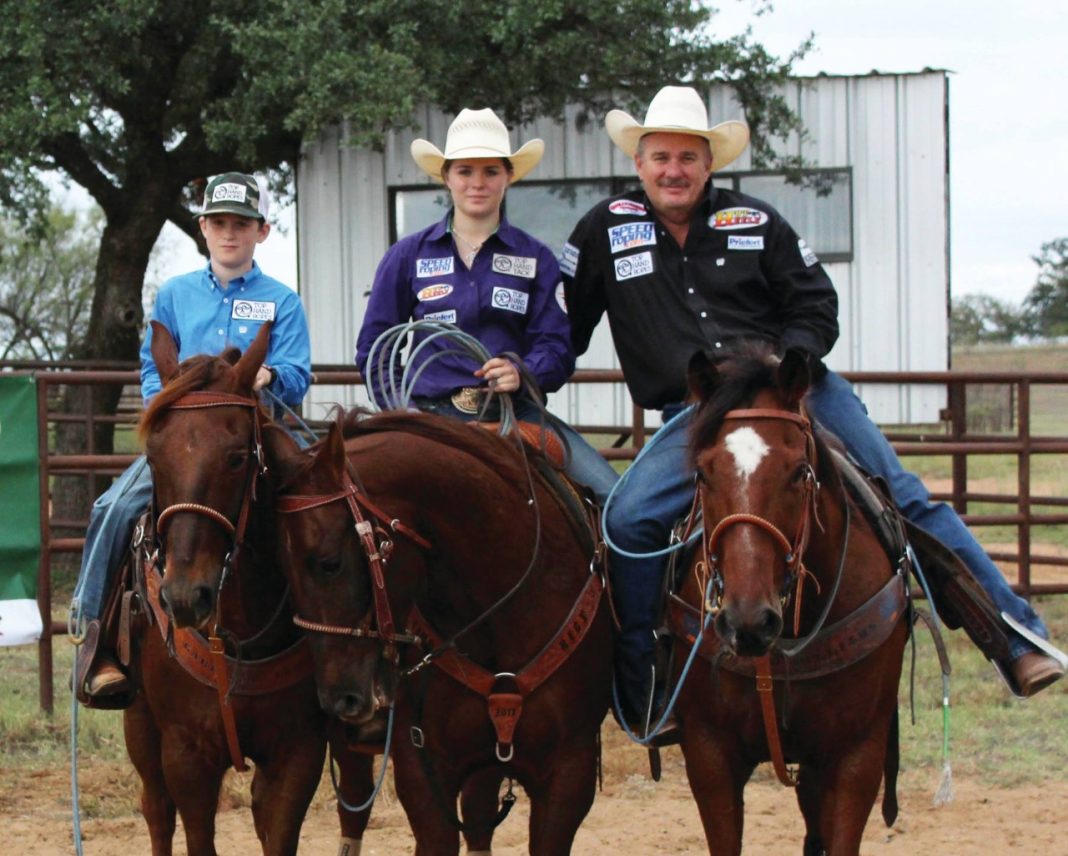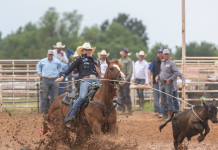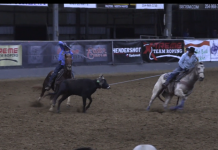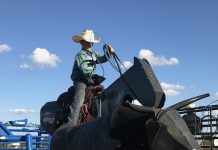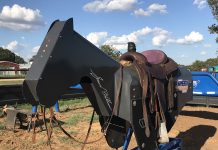The dangers of dallying
I am often asked why my kids use ropes that are cut off. This is a safety measure that I use to help them learn to dally and ride correctly. My daughter, Hali, used just one coil and a loop up until she became a #5 at 13 years old. She competed at all the ropings with one coil. If they learn to ride correctly, that’s all the rope they need. I have shaken hands with many kids, not yet old enough to drive, that were missing digits.
Dallying is a major fear for most parents and rightfully so. My son loves to heel and for a long time I would only let him use one coil. We have now progressed to where he gets a second coil, even at the jackpots. It teaches him to ride, get in position, and not let his horse stop forcing him to reach. Because if he reaches, he can’t get his dally. There are so many good things about teaching your kids to ride, get in position and not take bad throws.
We once taught a school in Guymon, Oklahoma, while were there for the rodeo. I don’t remember his name, but our host was very well known in the area. I had heard that quite a few NFR cowboys had taught schools at his house and they had all tried to get him to quit ducking. He was a wild man and when he threw, he went left. It was his place and almost everyone there was either a relative or good friend. I had heard he was quite a character.
After he ducked on his first steer, I warned him if he couldn’t keep his horse going I would fix it. He smirked at me and said, “Many have tried.” I replied, “I can.” He ran his second steer, ducked left and then rode back up to me. I asked for his rope, pulled out my knife and cut his rope where he had about two feet of tail. He said, “Son, no one has ever done that to me before, I can’t go left now.” I said, “You are correct sir.”
For the next two days he roped, got his dally and handled cows like he knew what he was doing. He couldn’t go left because he had to ride his horse once he threw – one of the most important things with beginners or kids learning to rope.
He didn’t have the luxury of getting his dally as he was going left. Once you throw your head loop you must learn to ride forward and keep your horse moving to get your dally and then handle the steer. If you have no rope, it teaches you that you have to keep riding or you don’t get the choice of turning the cow. In heeling, it’s so important because you have to keep your horse moving through the corner. And not let him stop causing you to reach and then have no chance of getting your dally.
I know when my kids leave home to compete, I’m putting them in a more difficult position because if they make a mistake it’s hard for them to get a dally. But the whole reason for using a cut off rope is to help them learn to ride their horse correctly and eliminate some of the things that can cause them to injure their hands. We can’t prevent every accident, but we can try to eliminate the possibility of getting their hands in their dally while creating good muscle memory. One rule we have that my father taught me is if we lose control of our rope, in any way, both hands come up in the air at should level. They do not stick their left hand down to get the rope.
This is one of the reasons the Speed Trainer was developed. Using this tool for practice teaches you to be accountable for your left hand. When we rope the dummy on the ground, we rein our left hand out when we pull our slack. You need to create good muscle memory of keeping your left hand in the correct position. On the Speed Trainer if you move your left hand it beeps and lets you know you’re doing something wrong. When Gabe is doing his heeling drills, he ropes it then pauses for 3-5 seconds to see what his loop looks like and then pulls his rope and dallies as fast as he can. Using the Speed Trainer he is able to learn correct muscle memory in a controlled situation safely.
There’s no greater joy for me than to have my kids in the arena with me. It’s my responsibility to keep them as safe as possible while we’re there.

